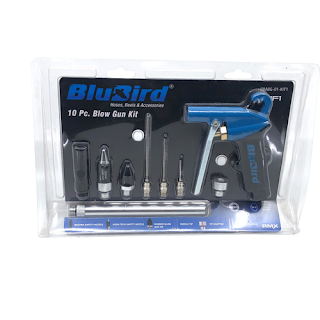The Ultimate Guide to Fuel Transfer Hoses for the American Market
Having the right type of equipment is important when you want to transfer fuel safely and efficiently. This is because fuel transfer hoses play a crucial role in a secure and smooth fuel transfer process.
But the problem is there are so many types of fuel transfer hoses available in the American market. Thus, choosing the right type of fuel transfer hose for your specific task can be daunting. However, fear not, as we have simplified the selection process in this blog. Read on to learn valuable information on purchasing the best fuel transfer hose in the USA.
Fuel Transfer Hoses – A brief overview
As the name suggests, a fuel transfer hose is used to transfer fuel from one point to another. It is used for convenient and quick transfer of fuel.
A fuel transfer hose is also designed for certain challenges that arise during transferring of fuel of different types like diesel, gasoline, biodiesel, etc. They are constructed with durable materials to withstand the harsh conditions and chemicals present in the fuel.
These hoses are typically made from synthetic rubber, reinforced with multiple layers of braided or spiral synthetic fibers, and are also coated with a protective outer layer.
Types of Fuel Transfer Hoses
Different types of fuel transfer hoses are present, designed according to the type of fuel they are used to transport.
Below are some common types of fuel hoses that are used in the US.
1. Gasoline hoses
Gasoline hoses are specifically designed to transport gasoline and other petroleum-based fuels while remaining compatible with various other fuels. They are also resistant to abrasion, weathering and UV rays. Gasoline hoses come color-coded black for easy identification
2. Diesel hoses
Diesel hoses are engineered to withstand the corrosive effects of diesel fuel. They are constructed using a synthetic rubber inner tube. They also have an outer layer that provides excellent resistance to oils, abrasion, and aging. The color code of diesel hoses is green.
3. Biodiesel hoses
Biodiesel hoses are designed to handle the transfer of biodiesel fuels, which have different chemical properties compared to traditional fuels. These hoses are constructed with materials that are resistant to biodiesel's aggressive nature. The color code of biodiesel hoses is yellow.
Now that you have a fair idea of the types of hoses that exist, let’s get to the part where you buy fuel hoses according to your needs.
How to choose the best fuel hose?
Save this simple guide below, as it will come in useful whenever you want to buy a fuel hose in the US.
1. Hose size and length
If you want optimal fuel transfer efficiency, then you need to choose the correct hose size and length. The hose size determines the flow rate and pressure capabilities. Hoses that have larger diameters have high flow rates, while smaller hoses have low flow rates.
When it comes to the length of the hose, you should consider the distance between the fuel source and the destination. This ensures that your hose is long enough to reach without straining or stretching.
2. Hose Fittings and Connections
Hose fittings and connections are critical in ensuring a secure and leak-free fuel transfer. The most common types of fittings include threaded cam-lock, and quick-connect fittings. Choose fittings that are compatible with your fuel transfer equipment and ensure a tight seal to prevent leaks and spills.
3. Safety Consideration
Safety should always be the top priority when handling fuel transfer hoses. Periodically inspect them for signs of wear, such as cracks, bulges, or damage to their outer layers - any signs should be replaced immediately to avoid leaks or accidents.
One should also use proper grounding techniques to avoid static electricity build-up when transporting flammable fuels, especially during transfers.
4. Compliance with Standards
When purchasing fuel transfer hoses, ensure they comply with relevant industry standards and regulations.
In the United States, hoses should meet specifications set by organizations such as the American Petroleum Institute (API), Underwriters Laboratories (UL), and the National Association for Hose and Accessories Distribution (NAHAD). Compliance with these standards ensures the hose's quality, safety, and performance.
Final Thoughts
Picking out an effective fuel transfer hose is key to efficient and safe operations. You should also take into account what type of fuel will be transferred, its size, length, and fittings/connections before making a choice.
Prioritize safety by regularly inspecting and maintaining hoses and complying with industry standards. By following this ultimate guide, you will gain all of the knowledge needed to make informed decisions when selecting fuel transfer hoses for the American market.




Comments
Post a Comment